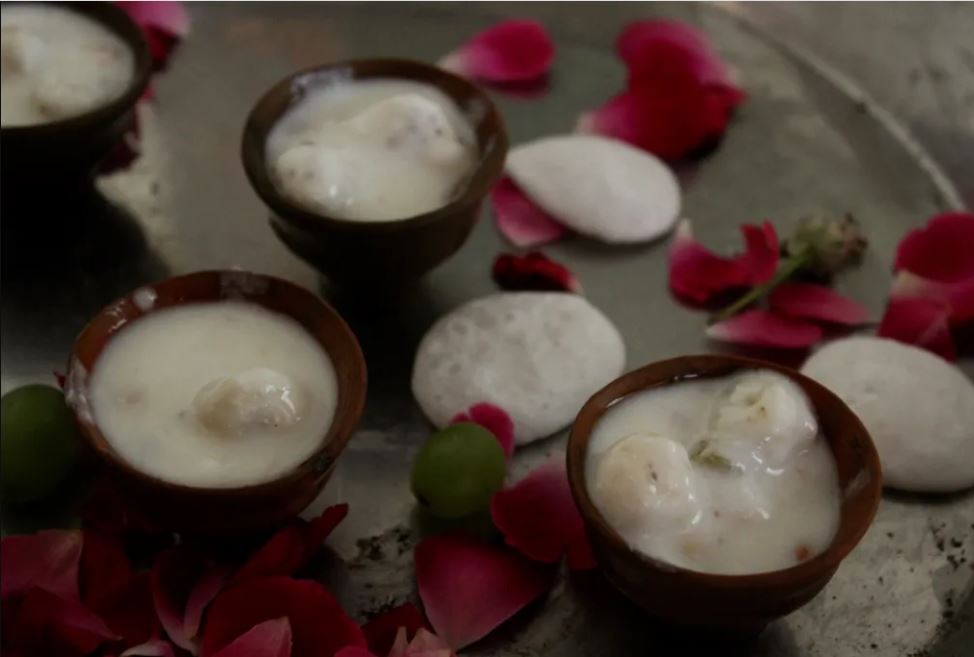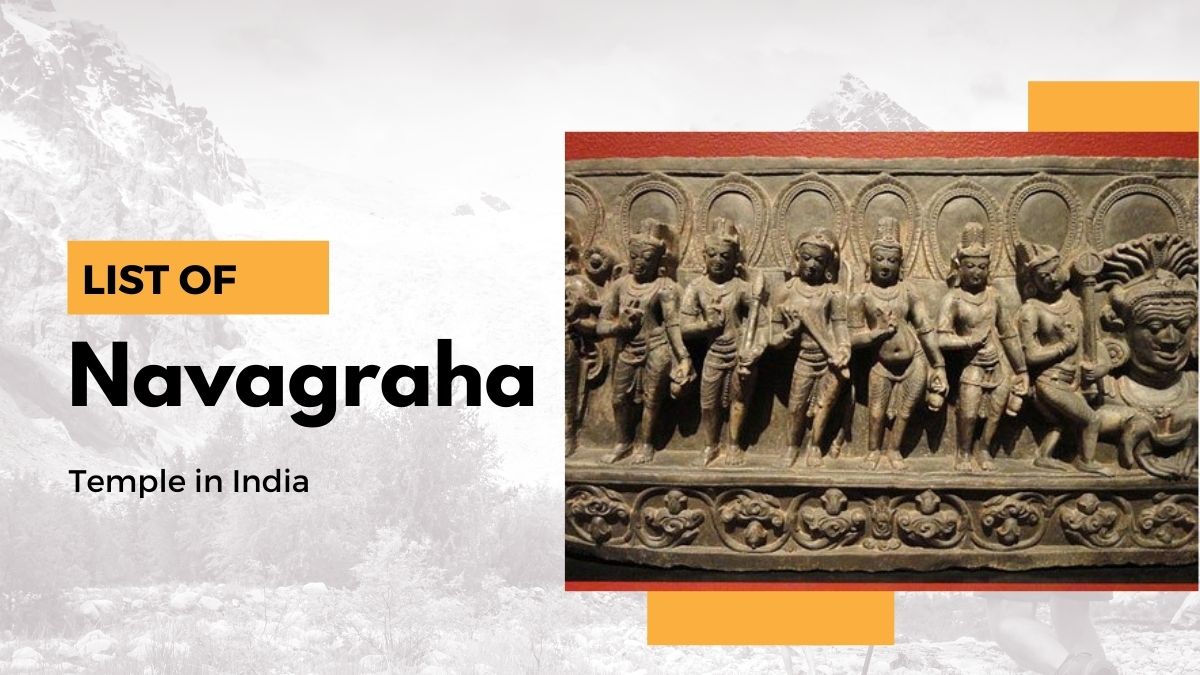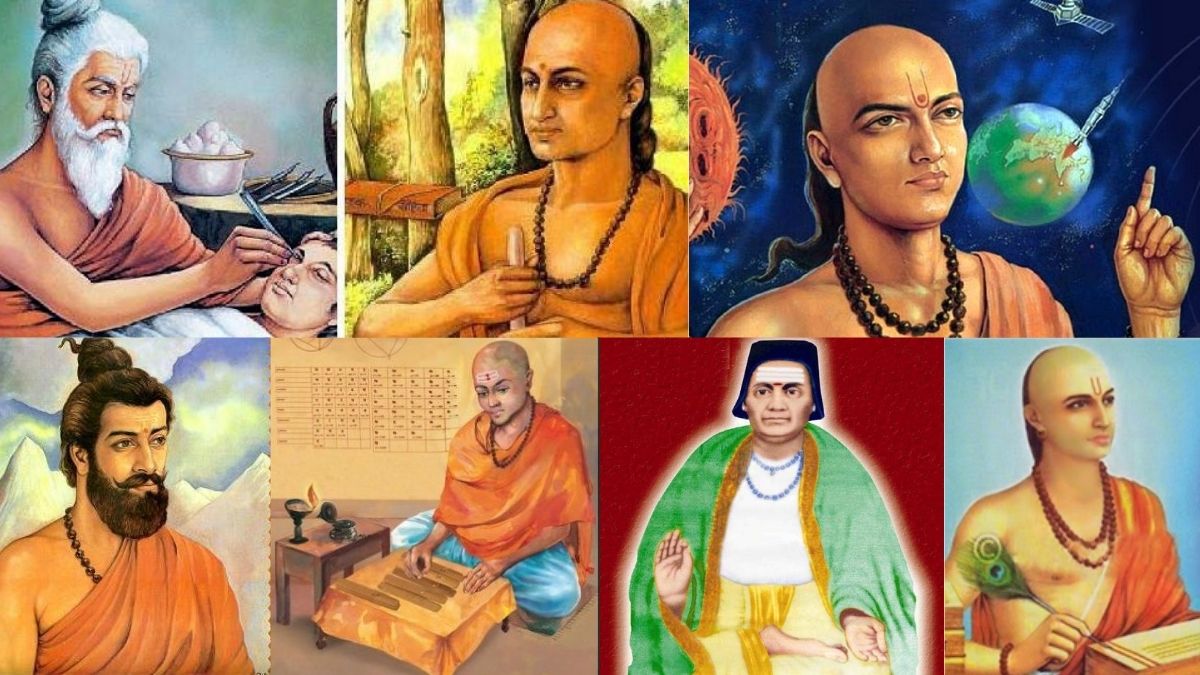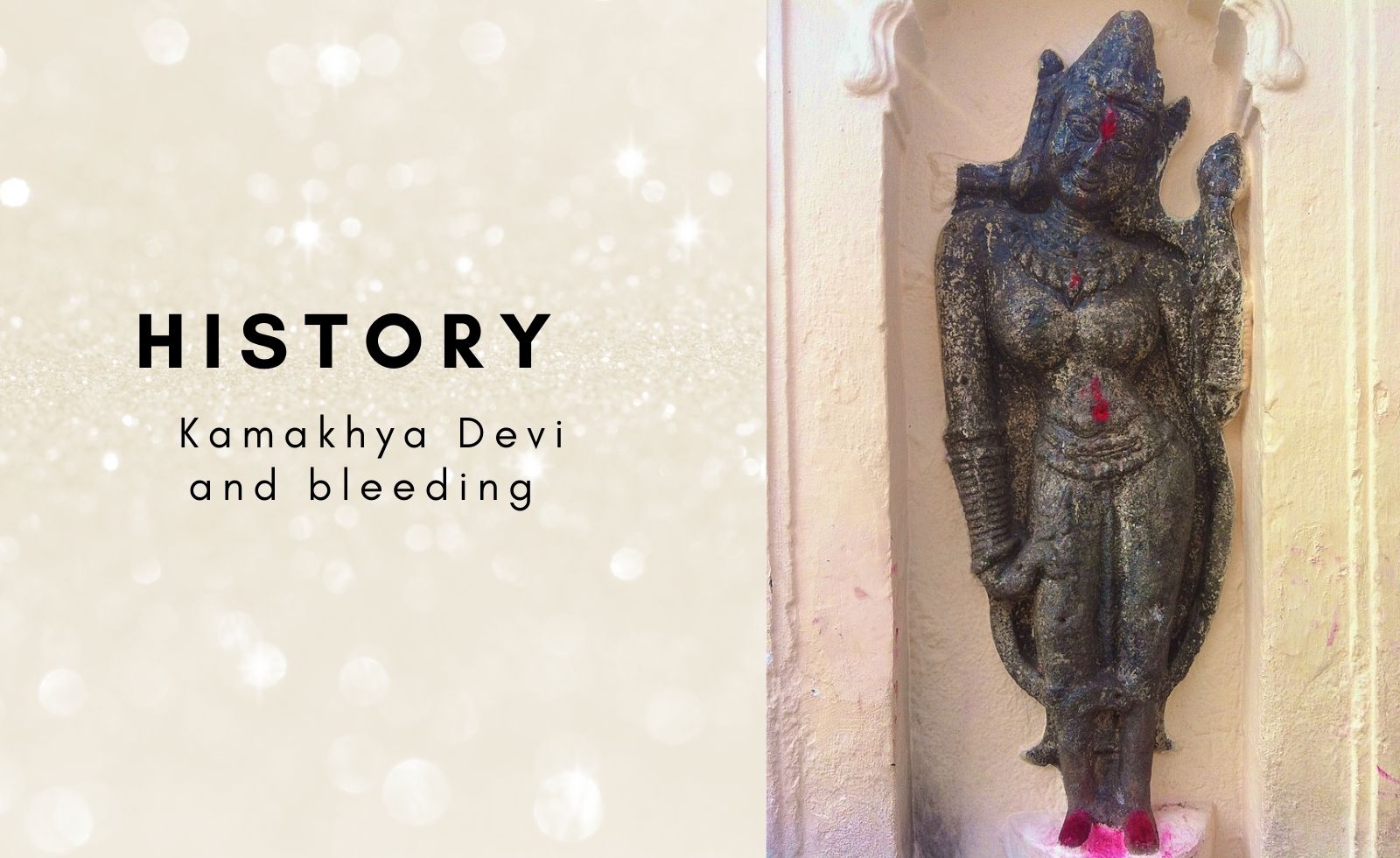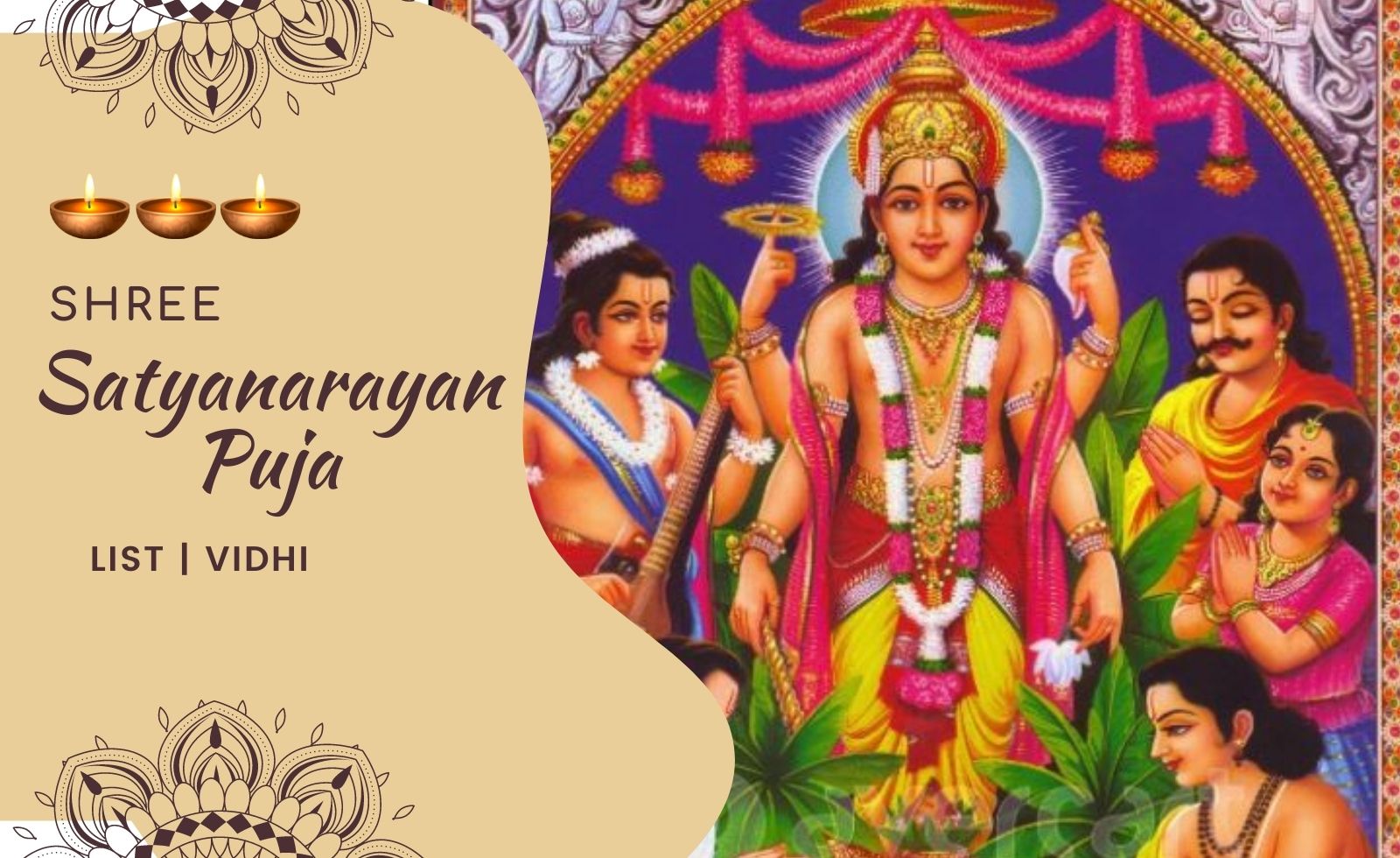
Since ancient times, many traditional practices have been ongoing in India that people follow regularly. The Hindu people worship different deities in the temples, perform various poojas, recite other mantras, and celebrate festivals according to custom-based practices. According to Hindu beliefs, worshipping and performing Pooja rituals brings purity, peace, wealth, and regular success in human life. Further, they believe that reciting the mantras makes the human soul free from its past karmic curse that brings obstacles in a human’s life in the present birth. Worshipping and performing rituals bring purity, peace, wealth, and regular success in human life. Following is the Satyanarayan Pooja list and Vidhi.
What is “Skanda Purana”?
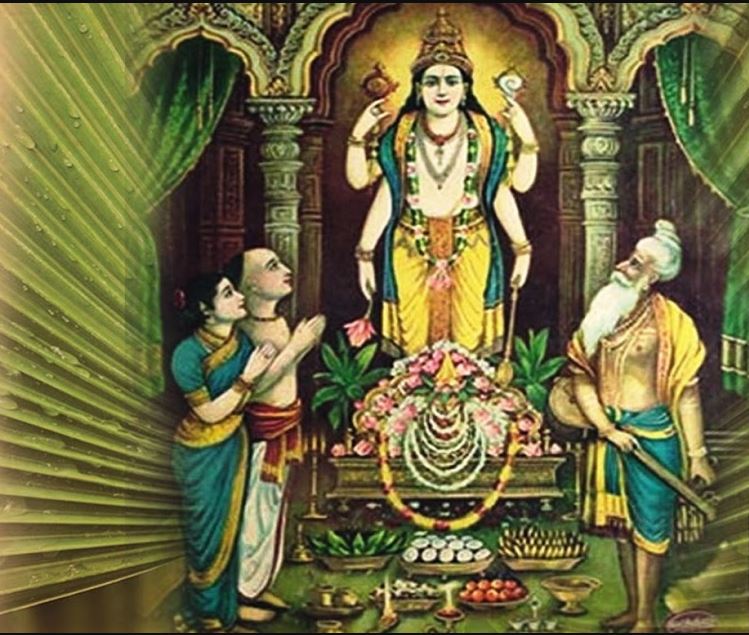
There are various religious books present in India that people read and practice to perform rituals according to traditions. One of the most famous books among the Hindu people is “Skanda Purana”, known as the 18th Hindu religious book. There is a belief that this book got the name of Lord Shiva and Parvati’s son “Skanda”.
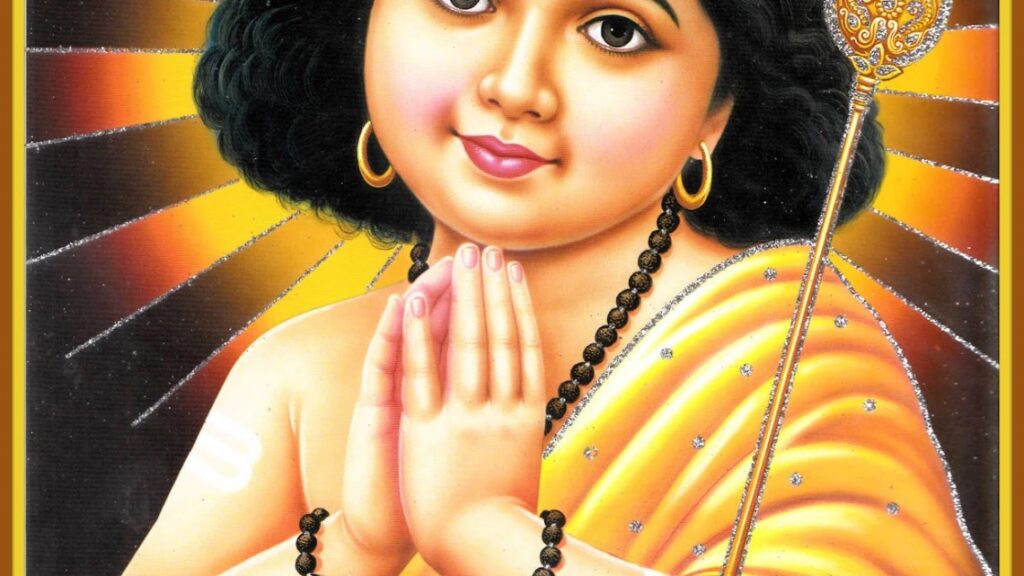
According to the derivation of the Hindu mythological research, the other names of “Skanda” are Kartikeya and Murugan. The “Skanda Purana” is the largest Hindu religious book that contains 88 thousand and one hundred shlokas. The book has been divided into seven parts, namely Maheshwar, Vaishnava, Brahma, Avanti, Prabhasha, Nagar, and Kashi. Many people read this book and recite the shlokas to respect the deities. It is believed that whosoever read this book and practice the rituals according to the methods provided in the book gets peace, harmony, wealth, victory, and fulfilment of all desires. This Purana was written by Vedavya and believed to be first recited by Lord Brahma himself. This Purana contains many mythological exciting stories of ancient times based on holy sites like Dwarka, Ayodhya, Kanyakumari, Kashi, Jagannathpuri, and Badrikashram. The “Skanda Purana” includes lots of stories that describe the power of women and the origin of the Indian Holi rivers like Yamuna, Ganga, Narmada, and Saraswati.
Meaning of Satyanarayan Pooja and its derivation
The above introduction has already explained the significance of spirituality, religion, and rituals in human life. In addition to all this, Satyanarayan Pooja is one of the rituals that almost every Hindu person is well aware of. This Pooja is performed according to the “Skanda Purana” story.
The word itself expresses the meaning; Satya refers to fairness, and Narayan refers to Lord Vishnu. SatyaNarayan Pooja is generally performed by the people to bring abundance, love, and happiness to their lives. People perform this Pooja before new house entry, starting new ventures, marriages, and before childbirth to get the blessings of Lord Vishnu. This Pooja could be performed for any reason.
As per the mentions of “Skanda Purana” to get the best results, it should be performed on Poornima day every month. SatyaNarayan Pooja is essential to be performed according to the methods provided in the “Skanda Purana”.
There was a belief that the SatyaNarayan Katha mentioned in the Purana is told by Lord Vishnu himself to the Narada. This Katha is divided into five parts, having five different stories. Lord Vishnu blessed people who obeyed the rules of this Pooja. This Katha is compulsory to be recited when performing the Pooja.
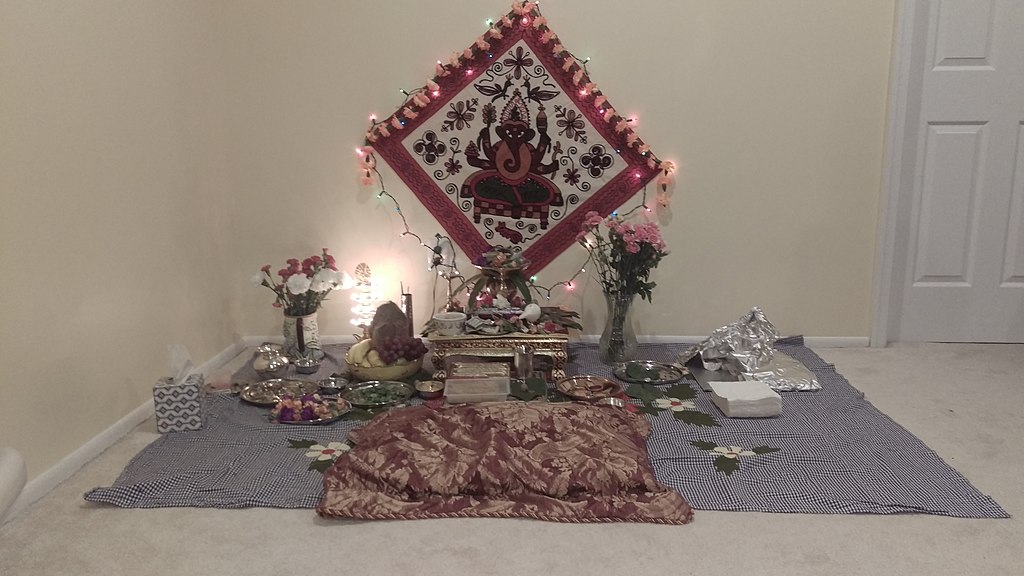
In the first part, Naradi goes to Lord Vishnu to seek solutions to free the people from the sufferings of their past karmas. Because during the travel, Narada went to Bhuloka and saw many people suffering due to their past sins.
Then as the remedy to this, Lord Vishnu starts narrating the other four stories to Naradi, which includes potential benefits of performing Satyanarayan Pooja.
Lord Vishnu describes that every individual must worship Lord Narayana and keep fasting on the day of the full moon to achieve salvation, happiness, wealth, and joy in human life. Further in the second part, there is a story of a beggar struggling to get one piece of food in a day; Lord Vishnu went to that beggar and told him the procedure of doing Satyanarayan Pooja.
The Brahmin performed the Pooja and became rich. Then the same process was said by the Brahmin to a struggling woodcutter, who also conducts the Pooja to remove poverty from his life.
In the third part, there is a story of a merchant who generally sails with luxury goods and has no child. One day he saw a king Ulkamukh performing SatyaNarayan Pooja on the river bank and asked him the procedure to do so. King narrated the whole process, and the merchant, along with his wife, performed that Pooja at home. Lord Narayan blessed him with a baby girl, but he stopped doing the rituals after the birth and promised to do it after the daughter’s wedding. This all makes Lord Narayana angry, and he plans a test for the merchant. The King apprehended the merchant and his son-in-law for robbery and sent them to jail.
On the other hand, the merchant’s wife Lilavati also faced the consequences, and all her wealth was robbed by the thieves. They both realized their sins and performed the Pooja again, and on the following day, the King got a dream proving the merchant and his son-in-law innocent. King released them both and acquainted them with a lot of wealth.
Further, in the fourth part, the story only relates to the third one. Lord Narayana tested the merchant again when returning to the ship by taking the form of a Sanyasi. The Sanyasi asked the merchant what he was concealing in the boat, he answered dried leaves. When he returned to the ship, he only found dry leaves in its stead instead of the riches. He lied to Sanyasi and bore the consequences but, at last, forgiven, and his wealth returned. On the other hand, the merchant’s daughter forgot to take the Pooja Prasad to see her husband. Lord Narayana stopped the ship in the sea and appeared to the merchant daughter, who was eagerly waiting for her husband. Lord told her to take Prasad; she admitted her fault and took it. Then after Lord sailed the ship, the whole family started performing Pooja rituals regularly.
In the last part of this Katha, King Angadwaj refused the Prasad of the Pooja due to his arrogant attitude. Consequently, all his wealth disappeared, and all his children died. After realizing his fault, the King consumed the Prasad and performed the Pooja; at last, all his sins have been forgiven by Lord Narayana. These stories people use to recite to complete the whole Satyanarayana Pooja at homes and offices. The Pooja ends up repeating an aarti song in front of the statue of Lord Narayana.
Why Satya Narayan Pooja is Beneficial?
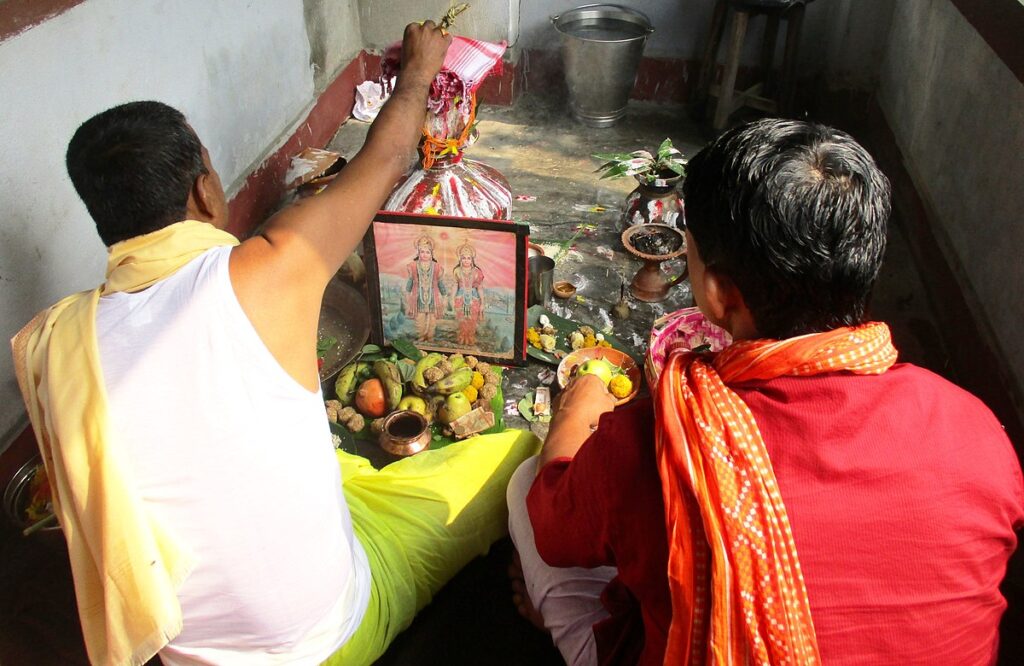
In modern times, Satyanarayana Pooja gained a lot of popularity. This Pooja is performed by the people of different states, whether Uttar Pradesh, Maharashtra, Gujrat, or Bengal. People are finding themselves at peace after performing this Pooja. The various benefits that this Pooja provides an individual are as follows:
- By keeping fast for Lord Satyanarayana, individuals become more focused on their goals, and their vision towards life gets more clarity.
- By performing this Pooja, all the hindrances coming in the way of an individual get vanish.
- By performing this Pooja, all the desires of an individual get fulfilled. Still, the condition is that the individual must follow the fair practice code in his deeds.
- By performing this Pooja, all the past sins get removed, and individuals get free from their karmic accounts.
- By performing this Pooja regularly, an individual would be able to remove his poverty and gain a lot of wealth.
- By performing this Pooja, an individual would get sound mental and physical health.
- By performing this Pooja, an individual would defeat all his enemies who are putting obstacles in his path.
- By performing this Pooja, an individual would differentiate between right and wrong actions. This will help in making the right decisions in life.
- By performing this Pooja, an individual will feel more secure and safe.
Vidhi, Offerings, and Procedure of Satya Narayana Pooja
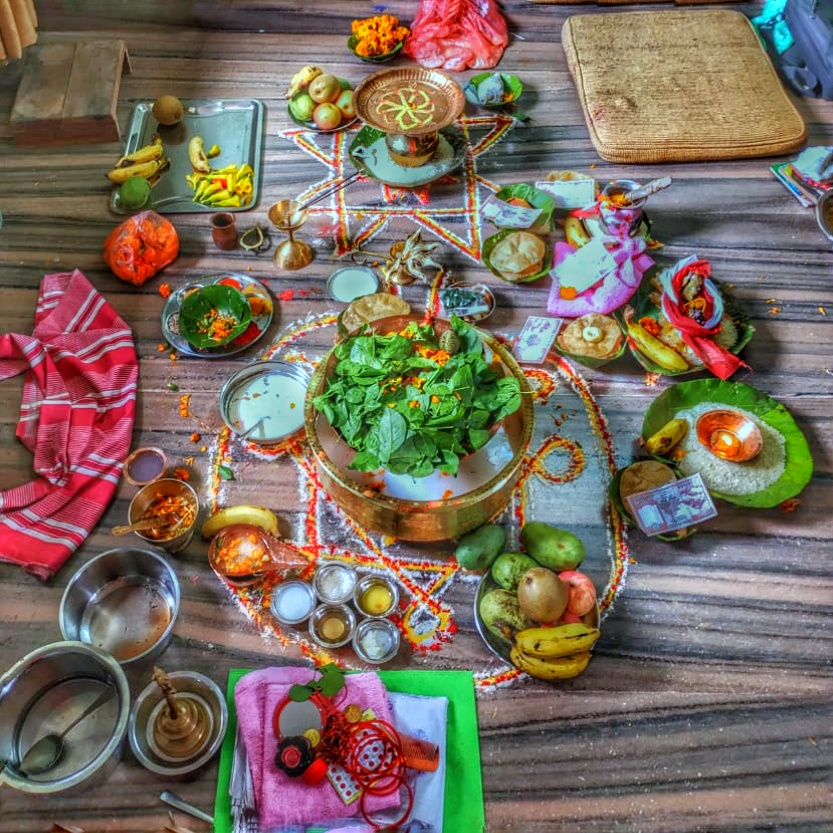
There is a proper procedure for performing the SatyaNarayana Pooja that includes sixteen rituals. These sixteen rituals together are known as Shodashopachara Pooja.
- The Pooja starts by performing the first ritual meditating in front of the picture of Lord Narayana, and reciting the mantra continuously. The mantra for meditation is
“Dhyayet Satyam Gunatitam Gunatrayasamanvitam! Lokanatham Trilokesham Kausbhabharanam Harim‼ Nilavarna Pitavastram Shrivatsapadabhushitam! Govindam Gokulanandam Brahmadyairapi Pujitam‼”
2. After meditation, the following ritual is to take the Avahanam in front of the lord picture by adjoining the palms. The mantra for performing this ritual is
“ Damodara Samagachchha Lakshmya Saha Jagatpate! Imam Maya Kritam Pujam Grihana Surasattama‼ Shri Laxmi Sahita Shri Satyanarayana Avahayami!”
3. The following ritual after Avahanam is “Asana”. The doer will offer five flowers in the feet of the picture of Lord Narayana by reciting this mantra.
“Nanaratna Samakirna Kartasvaravibhushitam! Asanam Devadevesha! Prityartham Pratigrihyatam‼ Om Shri Satyanaryanaya Namah Asanam Samarpayami!”
4. The following ritual includes offering the water on the feet of Lord Narayana. This ritual is known as “Padyam”, and the mantra for the same is
“Narayanah Namasteastu Narakarnavataraka! Padyam Grihana Devesha ! Mama Saukhyam Vivardhaya‼ Om Shri Satyanarayana Namah Padayoh Padyam Samarpayami!”
5. The next ritual is abhishekam of the Lord Narayana on the head by reciting the following mantra.
“Vyaktavyaktasvarupaya Hrishikapataye Namah! Maya Nivedito Bhaktya Arghyoayam Pratigrihyatam‼ Om Shri Satyanarayana Namah Arghyam Samarpayami!
6. The next ritual is Achammaniyam means offering the water to Lord Narayana for taking achamana by reciting the following mantra.
“Mandakinyastu Yadvari Sravapaapa Haram Shubham! Tadidam Kalpitam Deva Samyagachamyatam Vibho‼ Om Shri Satyanarayana Namah Achamaniyam Samarpayami!
7. The next ritual is offering the bath to Lord Narayana by Panchamrita, which comprises milk, honey, ghee, curd, and sugar by reciting the following mantra.
“Snanam Panchamritairdeva Grihana Surasattama! Anathanatha Sarvajna Girvana Pranatapriya‼ Om Shri Satyanarayana Namah Panchamrita Snanam Samarpayami!”
8. The next ritual is offering a regular bath to Lord Narayana with the normal water to remove the Panchamitra and recite the following mantra
“Nanatirthasamanitam Sarvapaapa Haram Shubham! Tadidam Kalpitam Deva Snanam Samarpayami!
9. The next ritual is to offer clean clothes to Lord Narayana and recite this mantra during the ritual.
“Shitavatoshna Samtranam Lajjayah Rakshanam Param! Dehalankaranam Vastra Prityartham Pratigrihyatam‼ Om Shri Satyanarayana Namah Vastra Yugmam Samarpayami!
10. The next ritual is to bind the kalawa, a red thread, to Lord Narayana and recite this mantra.
“Brahmavishnumaheshena Nirmitam Sutramuttamam! Grihana Bhagawan Vishnu Sarveshta Phalado Bhava‼ Om Shri Satyanarayana Namah Yajnopavitam Samarpayami!”
11. The next ritual is to offer Chandan powder to Lord Narayana and recite this mantra.
“Shrikhanda Chandanam Divyam Gandhadhyam Sumanoharam! Vilepanam Surashreshtha Chandanam Pratigirihyatam‼ Om Shri Satyanarayana Namah Chandanam Samarpayami!
12. The next ritual is offering the flowers to Lord Narayana by reciting this mantra.
“Malyadini Sughandini Malatyadini Vai Prabho! Maya Hritani Pushpani Pujartham Pratigrihyatam‼ Om Shri Satyanarayana Namah Pushpam Samarpayami!”
13. The next ritual is lightening the dhoop agarbati in front of Lord Narayana and reciting this mantra.
“Vanaspatirasodbhuto Gandhadhyo Gandha Uttamah! Aghreyah Sarvadevanam Dhupoayam Pratigrihyatam‼ Om Shri Satyanarayana Namah Dhupam Aghrapayami!”
14. The next ritual is the lightening of pure ghee Diya in front of the picture of Lord Narayana by reciting this mantra.
“Sajyam Cha Varti Samyuktam Vahnina Deepitam Maya! Deepam Grihana Devesha Mama Saukhyaprado Bhava‼ Om Shri Satyanarayana Namah Deepam Darshayami!
15. The next ritual is offering a different kinds of sweets and fruits to the Lord Narayana by reciting this mantra.
“Ghritapakvam Havishyannam Payasam Cha Sasharkaram! Nanavidham Cha Naivedyam Grihininva Surasattama‼ Om Shri Satyanarayana Namah Naivedyam Nivedayami!”
16. The last ritual is offering the betel leaves to Lord Narayana by reciting this mantra.
“Lavangakarpurasamyutam Tambulam Sura Pujitam! Eladichurna Samyuktam Prityartham Pratigrihyatam‼ Om Shri Satyanarayana Namah Tambulam Samarpayami!
17. The Pooja gets concluded after reciting a group aarti by keeping flowers in the hand that would be offered on the feet of Lord Narayana after the aarti.
Best Time to perform Satyanarayana Pooja
Satyanarayana Pooja is generally performed to bring peace, harmony, wealth, health, success, and prosperity to individual life. This Pooja could be done by an individual for some special occasion. This includes getting married, conceiving the child, entering a new home, before starting a new venture, and housewarming. According to ” Skanda Purana “, the ideal time to do this Pooja, according to “Skanda Purana”, is the day of a full moon “, Poornima”. An individual must perform all the rituals of the Pooja on this day every month to get regular results in the desired field. This Pooja could be performed on the day of Ekadashi and Amavas.
Who Can perform Satyanarayana Pooja
Any male and female, irrespective of their ages and occupations, can perform this Pooja at their homes and offices to get the desired results. But it is generally advised that an individual call some intellectual pandit to perform this Pooja. This will help complete all the rituals correctly. The mantras would be recited properly because pandit has a great hold on the mythological and religious books. Any married couple together does this Pooja ritual.
Rules of performing Satyanarayana Pooja
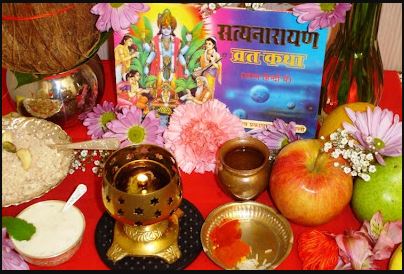
Some of the designed rules for performing this Pooja as per the Hindu mythology are as follows:
- Individuals performing the Satya Narayana Pooja must have taken a bath and worn clean clothes.
- A mandap with banana leaves must be made to keep the picture or idol of Lord Narayana during the Satya Narayana Pooja.
- Full Katha and mantra should be recited during the Satyanarayana Pooja.
- A Hawan or the fire ritual must be performed during and after the Satya Narayana Pooja.
List of items for performing Satyanarayana Pooja
The various items must be present to perform the Satyanarayan Pooja with proper vidhi and vidhaan. The list of items required for the Pooja is as follows:
- Red Sindoor
- Turmeric Powder
- Grains of nine types to signify the nine planets of the universe
- Different kinds of fruits and flowers
- Dhoop and Agarbatti
- Camphor Sticks
- Chandan Powder
- A picture or idol of Lord Narayana
- Betel Leaves
- Wheat
- Grass
- Betel Nuts
- Coins
- Dry Fruits
- Panchamitra
- Sweets
- Raw Coconut
- Diya
- Ghee
- Tulasi Leaves
- Kalawa or red thread
Important Dates for Satyanarayana Pooja in the Year 2022
The important dates of performing Satyanarayana Pooja in the Year 2022 are as follows:
- Monday, 17th January, Pausha Shukla Paksha Purnima
- Wednesday, 16th February, Magha Shukla Paksha Purnima
- Thursday, 17th March, Phalguna Shukla Paksha Purnima
- Saturday, 16th April, Chaitra Shukla Paksha Purnima
- Sunday, 17th May, Vaishaka Shukla Paksha Purnima
- Tuesday, 14th June, Jyeshtha Shukla Paksha Purnima
- Wednesday, 13th July, Ashadha Shukla Paksha Purnima
- Thursday, 11th August, Shravana Shukla Paksha Purnima
- Saturday, 10th September, Bhadrapada Shukla Paksha Purnima
- Sunday, 9th October, Ashwina Shukla Paksha Purnima
- Tuesday, 8th November, Kartika Shukla Paksha Purnima
- Wednesday, 7th December, Margashirsha Shukla Paksha Purnima

